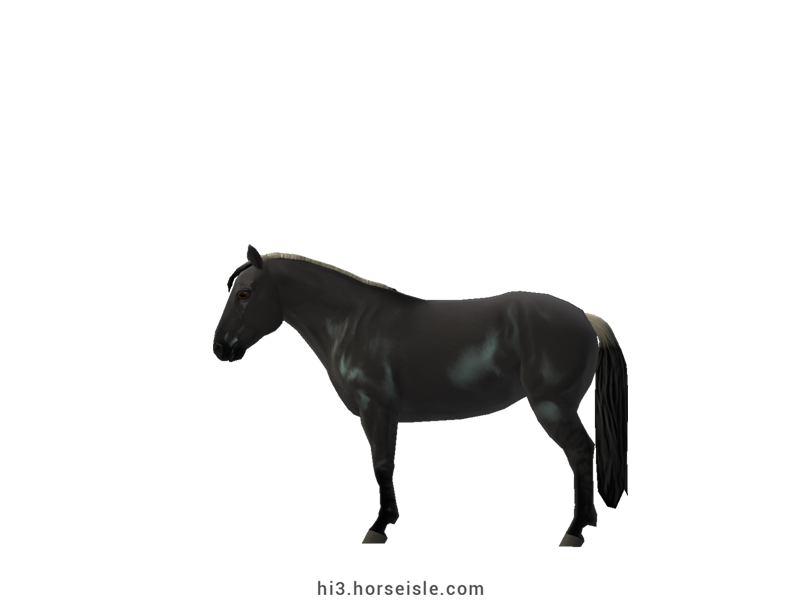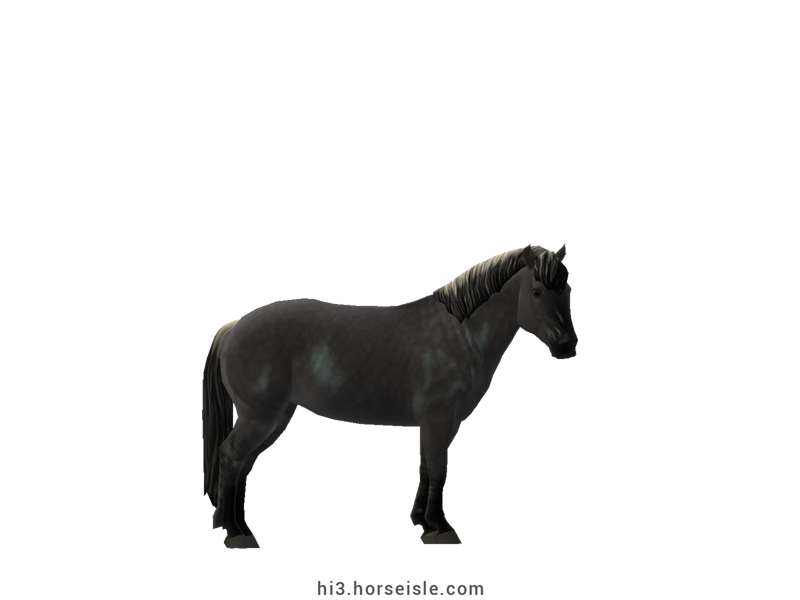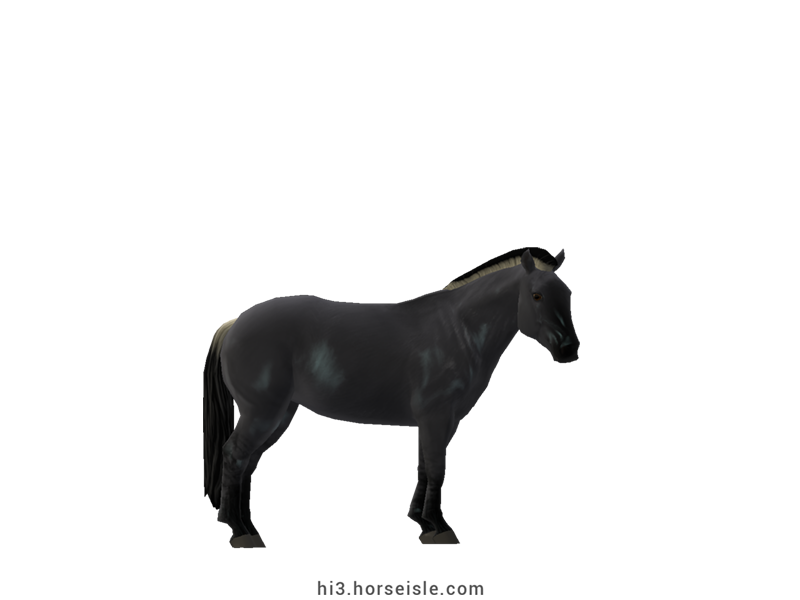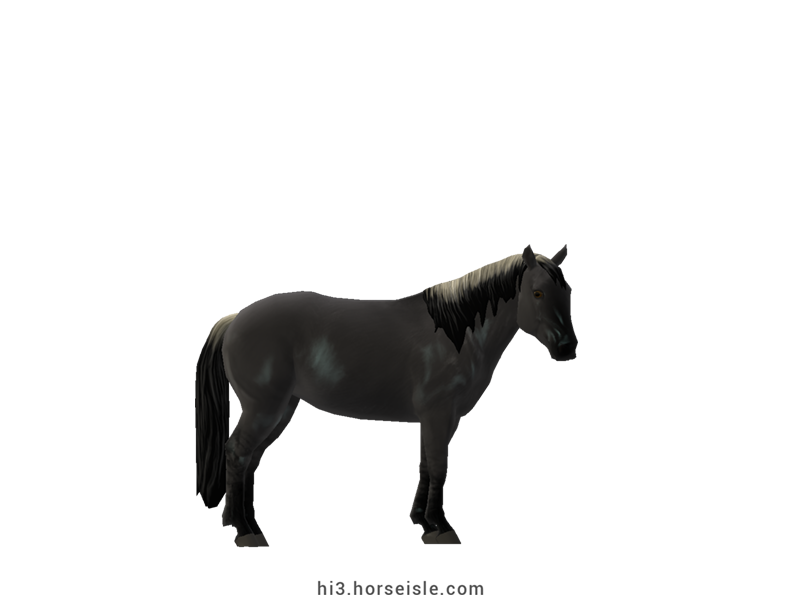Our Massive Real World Equine Reference!
[ INDEX ] Equine Type: Horse Breed: Konik [ PREV ] [ NEXT ]
Controversial origins:
Back in the 18th century, herds of wild (or feral) horses roamed in Eastern Europe. They were known as Tarpans, said to have a blue-dun coat, and eventually went extinct from the wild during the 19th century.
According to the current narrative, during the 19th century Polish breeders obtained Tarpans and crossed them with domesticated horses. Those crossings created the Konik, a breed whose coat was believed to be identical to that of the Tarpan.
There are three issues with this narrative. One, there are no records for such crossing efforts. Two, there are no DNA samples of Tarpans and therefore it's impossible to check if Koniks are indeed genetically linked to the Tarpan. Three, we don't really know what the Tarpan looked like, so how can we know if the Konik truly resembles the Tarpan?
Despite those issues, during the 20th century, the belief that the Konik descends from the Tarpan and resembles it was considered an indisputable fact and played a pivotal role in the Konik's development.
Vetulani's Konik horses:
Following World War I, the proposed visual similarity between the Konik and the Tarpan attracted the attention of breeders who wanted to recreate the extinct Tarpan. One of them was the Polish professor Tadeusz Vetulani, who released a herd of Konik horses in Bialowieza Forest, with the hope that the forest environment would cause the horses to re-develop their Tarpan characteristics.
The Heck Horse and the Konik:
Another breeding plan was executed by the Heck brothers in Nazi Germany. As part of it, Konik horses from Vetulani's program were taken to Germany and crossed with several other breeds which, according to the Heck brothers, were related to the Tarpan despite no proof of that.
The result was the Heck Horse (see 'Restoration Tarpan'), which later influenced the Konik breed in Poland. Following the end of World War II, the breeding of Konik horses resumed in Poland.
The Konik today & rewilding projects:
Today, Konik horses are usually used for "rewilding" nature conservation projects in Europe, primarily in Poland, Ukraine, and the Netherlands. As part of those projects, herds of Koniks are released into nature reserves where they live in semi-feral conditions.
The horses graze near the borders of forests and prevent forest succession in the nearby grasslands. They also graze overgrown grass that suffocates other species, thus maintaining the biodiversity in the areas in which they roam.
The idea behind rewilding projects is that Koniks balance the ecosystem in which they live the same way the Tarpans did. That said, we don't really know how Tarpans affected their environment nor to which extent, and therefore the Konik's impact on their ecosystem is still being studied and evaluated.
Not a Tarpan:
In addition to living in the wild like the Tarpan used to, Koniks are said to have the conformation and coat color of the Tarpan, even though we don't know what the Tarpan truly looked like. Still, this 'similarity', together with the Koniks' proposed genetic link to the Tarpans, created the misconception that Konik horses are actually Tarpans.
In reality, there is no solid evidence that Koniks are related to the Tarpans, and even if they are, they were still influenced a great deal by various domesticated horses. This means that Koniks are not Tarpans.
As of 2022, the exact extent to which the Konik is related to the Tarpan, if at all, is still being debated.
An iconic coat:
Whatever the Konik's origins are, one thing for sure is that its coat is unique.
All Konik horses have a grullo coat (dun on black base) that comes in various shades, from light grullo with a whitish body, to dark grullo with a blackish body. Regardless of the shade, the head is always darker than the body.
Another shade is a mix of grey/black hairs with yellowish hairs that resembles brown-dun and occurs in the summer. That led to the misconception that Koniks can be bay/brown dun. However, genetically speaking, they are still grullo.
The only non-grullo coats that Koniks can rarely be born with are red dun (dun on red base), and black. That said, such horses are removed from the breeding program.
A seasonal coat:
The shade of the coat varies greatly between the horses, and depends on the age and gender of the horse, as well as on the current season. Mares and younger horses appear lighter and yellower than older horses, who appear darker and greyer.
During summertime, the coat is darker and redder than during wintertime, when it is lighter and yellower. There are two reasons for this seasonal change: first, each season requires different camouflage; second, the lighter winter coat retains heat for longer periods of time than the summer coat, thus keeps the horse warm during the winter and cool during the summer.
Conformation:
Konik horses have a primitive-looking head, a thick neck, low withers, a short back, short legs, and an overall muscular build.
The mane and tail are thick, although the mane is usually short or medium in length. The legs are either clean from feathering or have light feathering.
Performance metrics:
The following are the: range, average, (SD), and MOE of performance metrics of ordered Koniks in Horse Isle (not bred ones). In rare cases, horses might have metrics outside of the range. Breeders can produce horses that are beyond this range.
Speed: 14.2-15.5, 14.7 (0.3), 0.05.
Sprint: 49-61, 55 (3), 0.51.
Accel: 0.93-1.11, 1.03 (0.04), 0.01.
Decel: 1.00-1.15, 1.07 (0.03), 0.01.
Jump: 5.05-5.25, 5.16 (0.05), 0.01.
Pull: 2.18-2.83, 2.47 (0.14), 0.03.
Turning: 50.73-65.09, 57.78 (3.29), 0.65.
Reverse: 2.4-3.1, 2.8 (0.1), 0.03.
Stamina: 48.24-52.64, 50.19 (0.82), 0.16.
Reaction: 0.61-0.74, 0.69 (0.02), 0.00.
Coats & Height:
Colors: grullo (dun on black base).
Additionals: none. The coat is always solid and lacks white markings.
Height: 12.3hh to 13.3hh.
[ INDEX ] [ PREV ] [ NEXT ]







